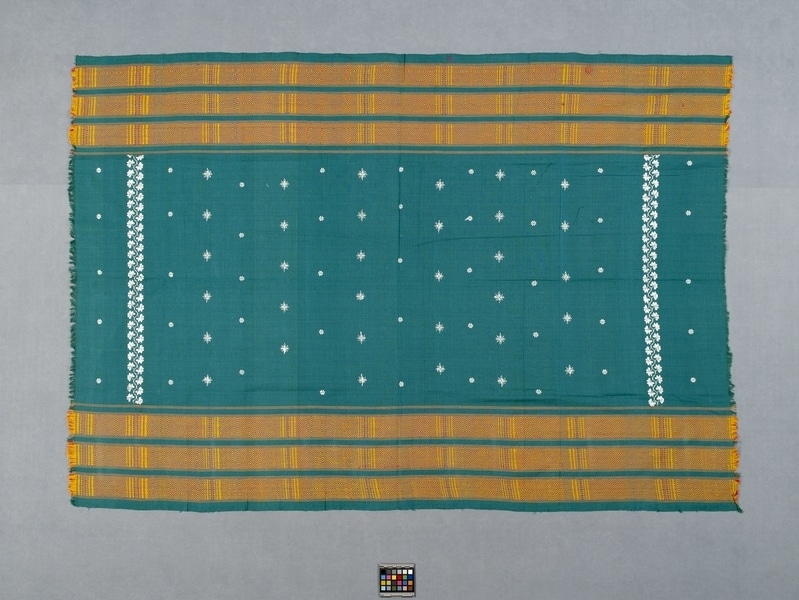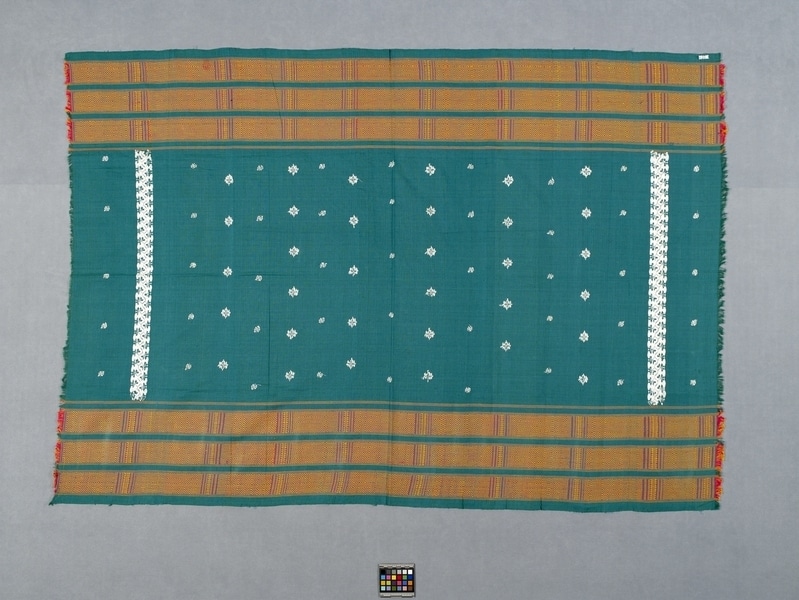Skirt Item Number: Ei32 from the MOA: University of British Columbia


Description
Long, rectangular, green cotton skirt. Warp threads create a geometric of triangles, lines and a lozenge motif enclosed in six lengthwise yellow and purple bands, three bands at each side border. Borders are decorated by a white creeper-vine motif and the centre by a widely spaced stylized white floral motif.
History Of Use
The Garo are tribal people living in the Garo Hills region of northeast India. They practice slash and burn agriculture and speak dialect of the Bodo-Naga group of Assam-Burma languages of great antiquity. Traditional hand loom weaving (mriwatok) is done by women, each of whom possesses her own loin loom (back strap loom). Geometric tribal designs in decorative combinations of diamonds, zigzags, horizontal lines, and triangles, as well as many other motifs, are used extensively. This object has a fine example of traditional tribal design shown in the bands of geometric forms. Women most commonly wear an unstitched wrapped body cloth (dakmanda) in traditional dress. Both the Garo and their neighbours, the Khasis, have been acculturated to Plains India fashion and education to somewhat greater extent than other South Asian tribal peoples.
Cultural Context
traditional
Item History
- Made in Meghalaya, India ? or Assam, India ?
- Collected during 1976
- Owned by Stephen Inglis before December 2, 1977
- Received from Museum of Anthropology Donations Fund (Funding source) and Stephen Inglis (Seller) on December 2, 1977
What
- Name
- Skirt
- Identification Number
- Ei32
- Type of Item
- skirt
- Material
- cotton fibre and dye
- Manufacturing Technique
- woven
- Overall
- height 160.8 cm, width 109.8 cm
Who
- Culture
- Garo
- Previous Owner
- Stephen Inglis
- Received from
- Museum of Anthropology Donations Fund (Funding source) and Stephen Inglis (Seller)
Where
- Holding Institution
- MOA: University of British Columbia
- Made in
- Meghalaya, India ? or Assam, India ?
When
- Collection Date
- during 1976
- Ownership Date
- before December 2, 1977
- Acquisition Date
- on December 2, 1977
Other
- Item Classes
- textiles
- Condition
- good
- Accession Number
- 0411/0146